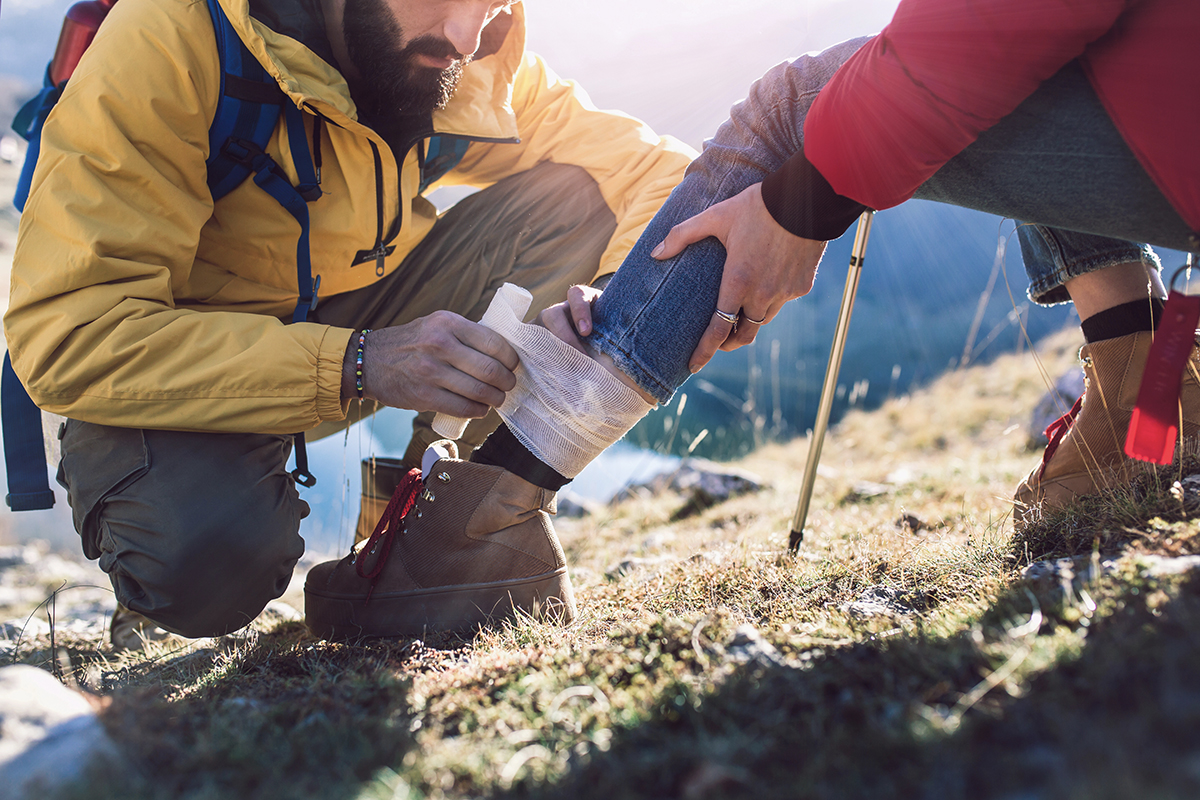Basic safety rules on the trail
Safety in the mountains starts with proper preparation and following a few simple rules. First and foremost, always plan your route carefully before setting out on the trail. Knowing the terrain, the weather forecast and assessing one's own physical capabilities is the basis for a successful and safe hike. It is also important to inform someone of the planned route and the expected time of return, so that in the event of an accident, rescue operations can be undertaken quickly.
You need to take the right equipment with you on the trail. Basic equipment includes a map, compass, mobile phone with a charged battery, first aid kit, torch, extra clothes in case of a sudden change in weather and enough food and water. It is extremely important to wear appropriate footwear that provides a good grip and protects your feet from injury. Many people forget about UV protection, such as headgear and sunscreen.
When hiking, be cautious and aware of your surroundings - regularly assess trail conditions and adapt your walking pace to changing circumstances. If you encounter difficult conditions, such as steep slopes, slippery rocks or a sudden break in the weather, it is better to turn back or seek a safer route. It is absolutely necessary to avoid deviating from the marked trail, ignoring warnings and signposts, climbing on unauthorised rock formations and other risky behaviour.
How to respond to falls and fractures
Falls and fractures are some of the most common injuries sustained while hiking in the mountains. It is crucial to act quickly and effectively to avoid putting the victim at risk of more serious damage.
Assessment of the situation and safety
The first step is to assess the situation and make sure that both the casualty and the helper are in a safe place. If there is a risk of further falls or other hazards, move the casualty to a safer place if possible.
Stabilisation of the victim
If you suspect a fracture, immobilise the limb to prevent further damage. This can be done with bandages, trekking poles or other available items that will serve as a splint. In the case of an open fracture, you should also cover the wound with a clean cloth to prevent infection. It is best to avoid moving the fractured limb and try to keep the injured person at rest as much as possible.
Pain relief and victim comfort
If the casualty is conscious and there are no contraindications, you can give him painkillers, which should be part of your basic first aid kit. Help him to stay calm and make him as comfortable as possible. In the case of heat shock, you can use NRC (rescue) film to help keep the body warm.
Call for assistance
If the fracture is serious or the victim is unable to move independently, call for emergency help immediately. In the mountains, it is best to use the emergency number 112, which operates throughout Europe. Give the exact location and describe the condition of the casualty so that the emergency services can respond quickly and effectively.
It is extremely important to always carry a basic first aid kit and know first aid techniques. This will allow you to remain ready for emergencies while hiking in the mountains.
First aid for bites and stings
Insect bites and stings are common events on the trail, which can lead to reactions ranging from mild irritation to severe allergies. To prevent complications, prompt action is key. After a bite or sting, the site of the bite and symptoms should be assessed. For most insects, symptoms are limited to pain, redness and swelling. Check for signs of an allergic reaction, such as difficulty breathing, swelling of the face or throat, dizziness and loss of consciousness - in such cases, immediate medical attention is needed.
If the victim has been stung by a bee, the stinger should be removed as soon as possible by gently scraping it off, for example with a fingernail or the edge of a credit card. The sting site should be washed with soap and water and a cold compress applied to reduce swelling and pain. Antihistamines or painkillers can also be given.
Monitor the condition of the affected person for several hours. If symptoms worsen or signs of an allergic reaction appear, call for help immediately. People with a history of severe allergic reactions to insect bites should carry an adrenaline auto-syringe and know how to use it. A quick response can significantly reduce the risk of complications and improve the victim's comfort while hiking in the mountains.
When and how to call for emergency assistance
Calling for help in the mountains may be necessary in the event of serious injury, sudden illness or life-threatening situations. The first step is to assess the situation and the condition of the injured person. If the person is unconscious, has difficulty breathing, severe pain or serious injuries such as fractures, it is necessary to call for help immediately. When speaking to the emergency operator, give the exact location, preferably using GPS coordinates, a description of the condition of the casualty and any relevant information such as the number of casualties and type of injuries.
While waiting for the emergency services to arrive, it is important to secure the casualty and the scene. He or she should be protected from other injuries, kept thermally comfortable and his or her condition monitored. If possible, sending one person to the nearest landmark or location where information can be communicated more accurately to rescuers can speed up the rescue operation. Time is of the essence in emergency situations, so acting quickly and effectively can save lives.

